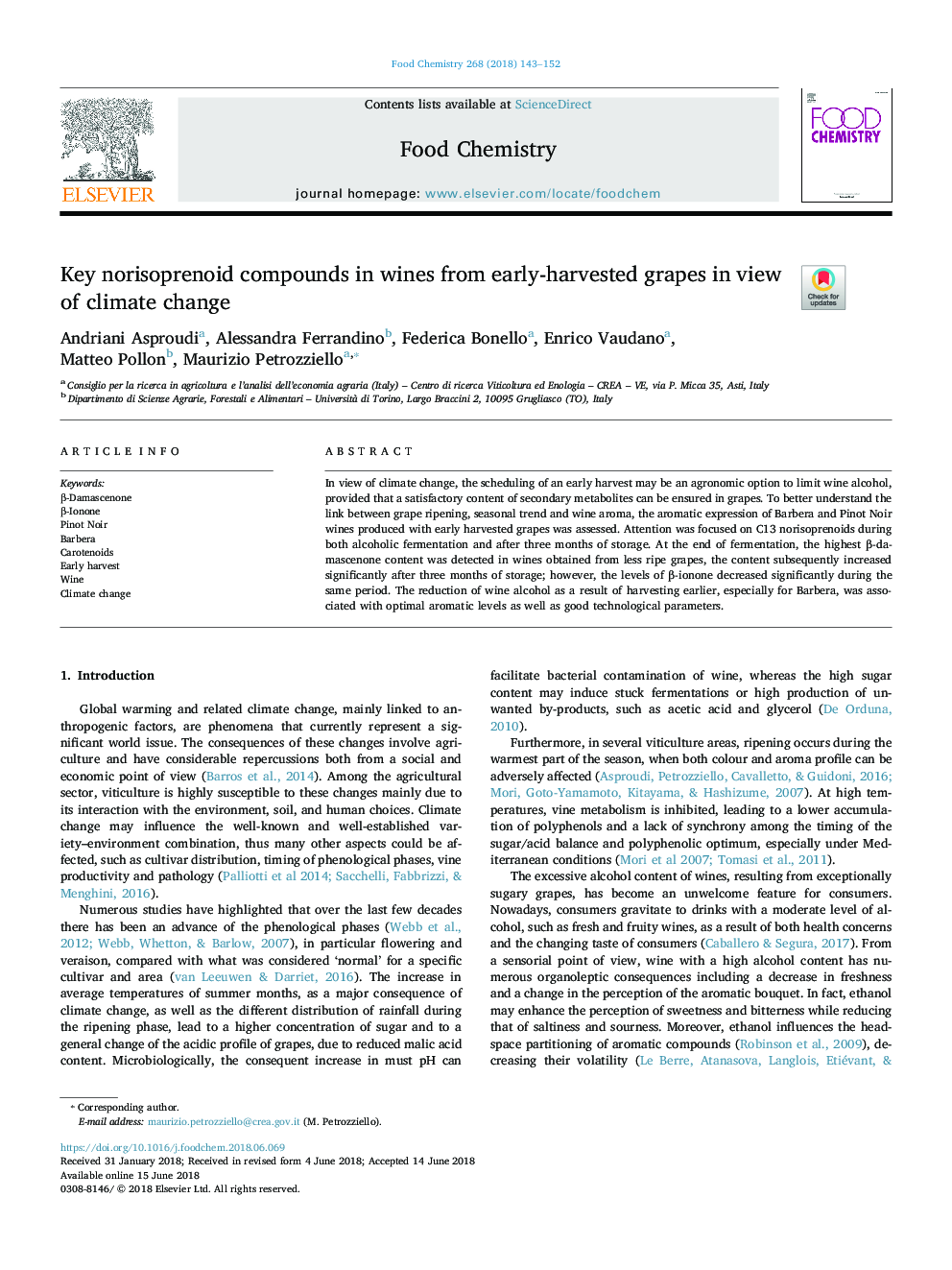| Article ID | Journal | Published Year | Pages | File Type |
|---|---|---|---|---|
| 7584255 | Food Chemistry | 2018 | 10 Pages |
Abstract
In view of climate change, the scheduling of an early harvest may be an agronomic option to limit wine alcohol, provided that a satisfactory content of secondary metabolites can be ensured in grapes. To better understand the link between grape ripening, seasonal trend and wine aroma, the aromatic expression of Barbera and Pinot Noir wines produced with early harvested grapes was assessed. Attention was focused on C13 norisoprenoids during both alcoholic fermentation and after three months of storage. At the end of fermentation, the highest β-damascenone content was detected in wines obtained from less ripe grapes, the content subsequently increased significantly after three months of storage; however, the levels of β-ionone decreased significantly during the same period. The reduction of wine alcohol as a result of harvesting earlier, especially for Barbera, was associated with optimal aromatic levels as well as good technological parameters.
Related Topics
Physical Sciences and Engineering
Chemistry
Analytical Chemistry
Authors
Andriani Asproudi, Alessandra Ferrandino, Federica Bonello, Enrico Vaudano, Matteo Pollon, Maurizio Petrozziello,
